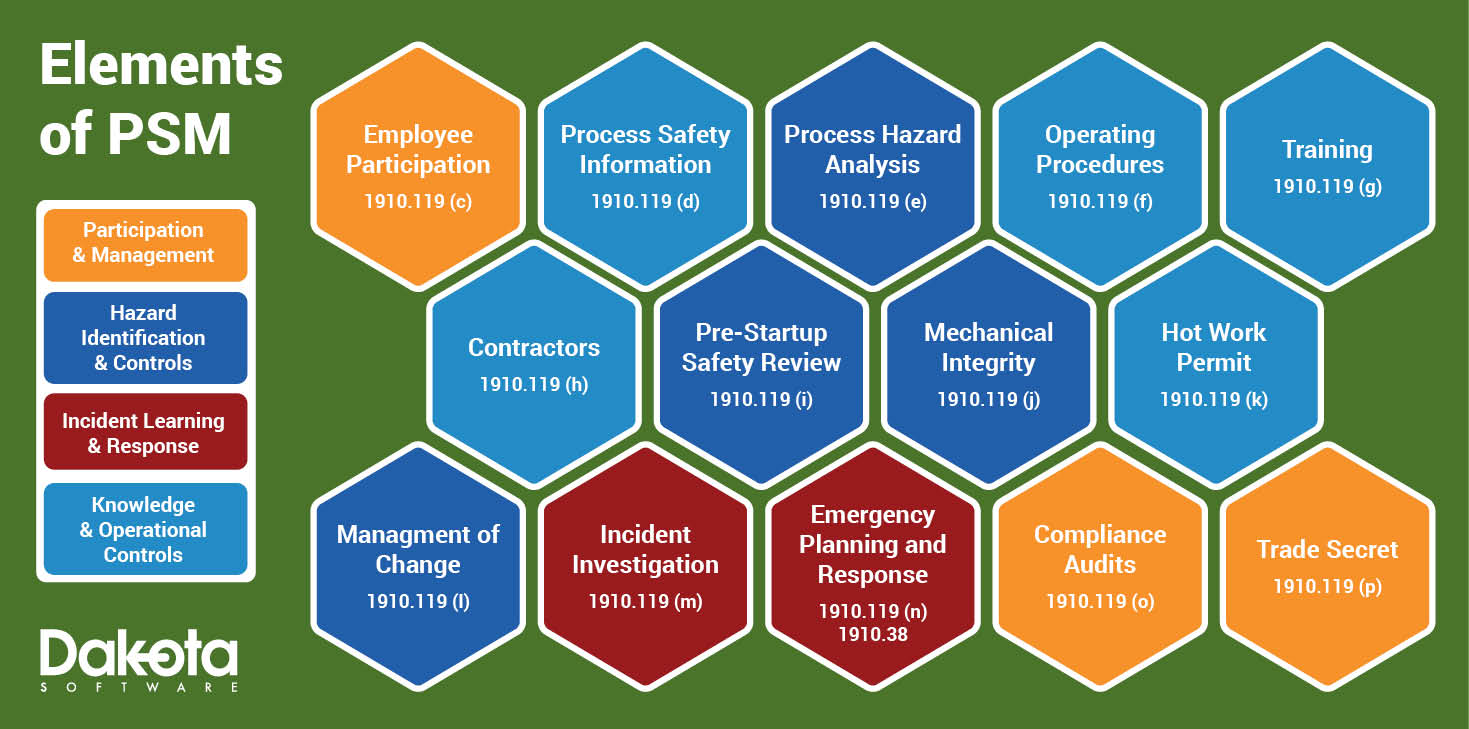December 3rd, 2024 by Dakota Software Staff

A strong understanding of Process Safety Management (PSM) is critical for businesses that work with a wide range of hazardous chemicals. With a strong process safety management program in place, companies can engage in effective management of hazards that minimize worker exposure to risk and emphasize alignment with OSHA standards. In this way, organizations that emphasize adherence to a PSM program address concerns related to employee and facility safety and regulatory compliance.
Let's build a strong understanding of the basics of PSM, from a definition of the concept to the tools available to businesses for managing PSM regulations and implementing an effective safety program.
Businesses that work with hazardous chemicals need a strong PSM program.
PSM is a shortened term that refers to a specific OSHA rule, the Process Safety Management of Highly Hazardous Chemicals standard. This rule was developed in response to a widespread, recognized concern related to unexpected releases of potentially dangerous liquids and gases across a number of different industries. Proper controls, oversight and employee education are vital for mitigating the possibility of accidental releases that can cause a wide range of negative outcomes. The PSM standard focuses on the "management of hazards associated with processes using highly hazardous chemicals."
OSHA's approach to managing these chemical hazards involves a comprehensive program that brings together tools for oversight, a variety of safe handling procedures and effective management practices. There are separate standards for the general industry and construction business categories, although both standards share the same goal and many other similarities.
Whether a business manufactures hazardous chemicals itself or transports, utilizes or stores them, it needs to have a plan in place to ensure all uses of and interactions with those substances are compliant with OSHA rules. Compliance isn't the only goal, of course. A commitment to strong PSM helps keep staff, facilities and their surrounding communities safe from accidental releases.

As is the case with many major standards, OSHA developed detailed guidance around the specifics needed for effective PSM, covering a variety of procedures, regulations, enforcement policies and similar concerns. A comprehensive approach to PSM involves these 14 elements:
"The right PSM solution can save time and money while encouraging compliance."
PSM is a complicated consideration for modern businesses that utilize potentially hazardous chemicals, requiring that they carefully evaluate a wide range of processes from many different angles. Efficient management of PSM is therefore a vital need for companies that want to ensure strong compliance without involving excess time and effort on the part of staff. Because OSHA only provides basic rules for how information should be recorded and stored, there are many different approaches that organizations can consider.
There are effective strategies beyond the labor-intensive option of manually recording information and attempting to track it across many spreadsheets and documents and the expensive process of hiring outside professionals to manage compliance efforts. Businesses should consider EHS Software that automates a variety of labor intensive processes, keep all aspects of PSM information easily accessible in a single digital location and allow staff to focus on areas where human input and involvement are critical. The right platform allows companies to emphasize thorough compliance efforts without having to dedicate substantial employee resources to basic filing, data entry and information management tasks.
Visit our Demo Library to learn how Dakota's solutions can help address your PSM challenges.